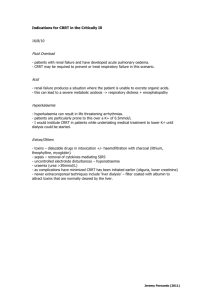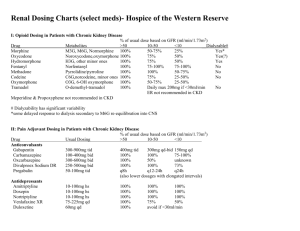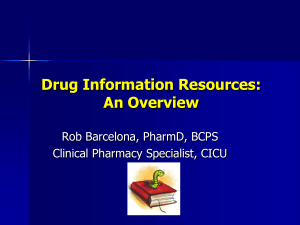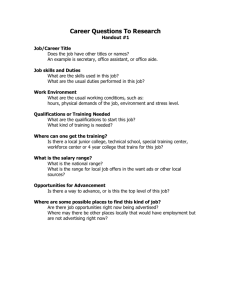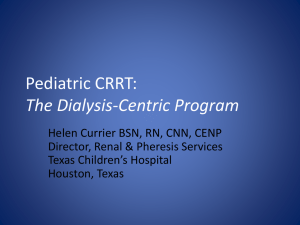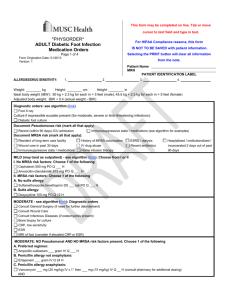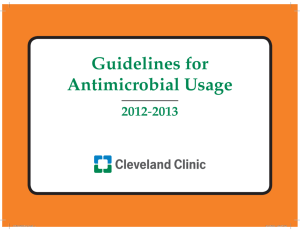file - BioMed Central
advertisement
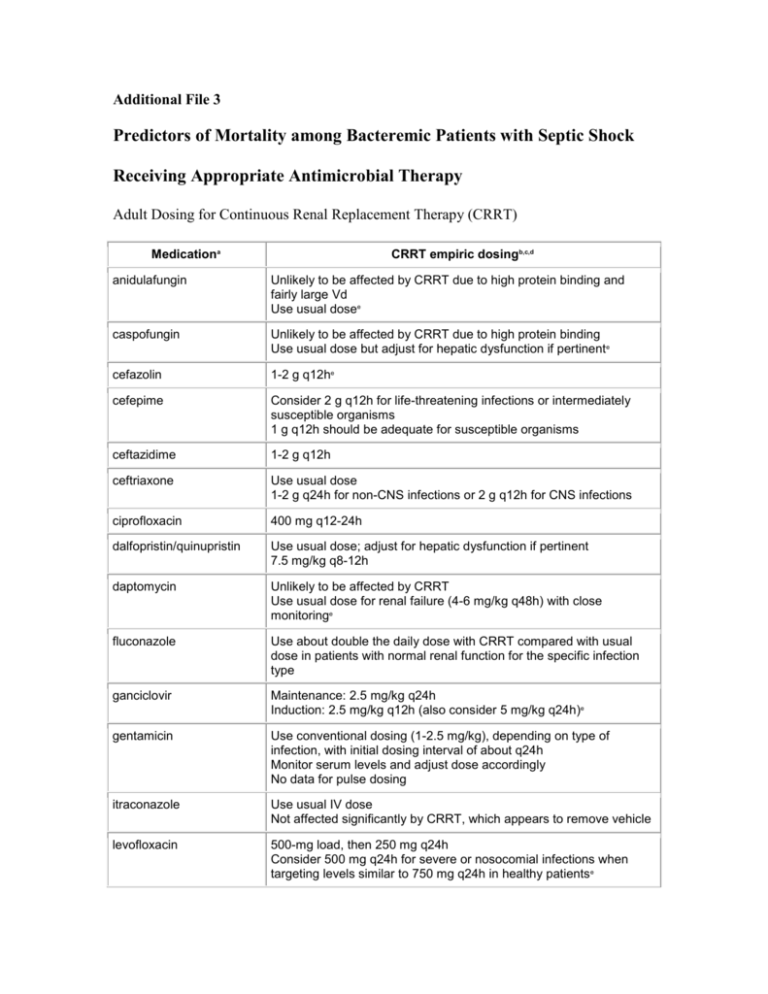
Additional File 3 Predictors of Mortality among Bacteremic Patients with Septic Shock Receiving Appropriate Antimicrobial Therapy Adult Dosing for Continuous Renal Replacement Therapy (CRRT) Medicationa CRRT empiric dosingb,c,d anidulafungin Unlikely to be affected by CRRT due to high protein binding and fairly large Vd Use usual dosee caspofungin Unlikely to be affected by CRRT due to high protein binding Use usual dose but adjust for hepatic dysfunction if pertinente cefazolin 1-2 g q12he cefepime Consider 2 g q12h for life-threatening infections or intermediately susceptible organisms 1 g q12h should be adequate for susceptible organisms ceftazidime 1-2 g q12h ceftriaxone Use usual dose 1-2 g q24h for non-CNS infections or 2 g q12h for CNS infections ciprofloxacin 400 mg q12-24h dalfopristin/quinupristin Use usual dose; adjust for hepatic dysfunction if pertinent 7.5 mg/kg q8-12h daptomycin Unlikely to be affected by CRRT Use usual dose for renal failure (4-6 mg/kg q48h) with close monitoringe fluconazole Use about double the daily dose with CRRT compared with usual dose in patients with normal renal function for the specific infection type ganciclovir Maintenance: 2.5 mg/kg q24h Induction: 2.5 mg/kg q12h (also consider 5 mg/kg q24h)e gentamicin Use conventional dosing (1-2.5 mg/kg), depending on type of infection, with initial dosing interval of about q24h Monitor serum levels and adjust dose accordingly No data for pulse dosing itraconazole Use usual IV dose Not affected significantly by CRRT, which appears to remove vehicle levofloxacin 500-mg load, then 250 mg q24h Consider 500 mg q24h for severe or nosocomial infections when targeting levels similar to 750 mg q24h in healthy patients e linezolid Use usual dose of 600 mg q12h Studied with lower flow rates of 1.5-3 L/h; consider increase to 800 mg q12h or 600 mg q8h with higher flow rates or more resistant organisms meropenem 1 g q8-12h metronidazole 500 mg q6-8he Adjust dose for hepatic dysfunction if pertinent micafungin Unlikely to be affected by CRRT due to high protein binding Use usual dosee moxifloxacin Use usual dose of 400 mg q24he penicillin Consider about 6 million units per day (comparable to 20 million units when renal function is normal)e piperacillin/tazobactam 2.25-3.375 g q6he or 4.5 g q8he posaconazole Unlikely to be affected due to large Vd, high protein binding, and low serum levelse Use usual dose tigecycline Unlikely to be affectede Use usual doses of 100-mg load, then 50 mg q12h, with close monitoring trimethoprimsulfamethoxazole (tmp/smx) Consider 5 mg/kg tmp q12h (comparable to about 15 mg/kg q24h tmp when renal function is normal)e Monitor serum levels and adjust dose accordingly vancomycin 15-20 mg/kg q24-48h is reasonable empiric therapy Monitor serum levels and adjust dose accordingly voriconazole Use usual dose but adjust for hepatic dysfunction if pertinente CRRT appears to remove vehicle For drugs not included, even in the absence of good studies, equations can be used to make predictions about how they might be affected by CRRT. b CRRT flow rates affect the clearance of drugs removed by this modality. If lower flow rates are used, doses of drugs that are removed may need to be decreased. For considerably higher flow rates, doses may need to be increased. c Dosing recommendations apply to total CRRT flow rates of 3-4 L/h. Other forms of continuous replacement therapy (eg, SLED) or use of higher or lower flow rates may have different dosing needs. d Assuming minimal residual renal function, normal liver function, and total flow rates of 3-4 L/h. e Support in the medical literature is unavailable or limited; check levels when possible to confirm dose. a
